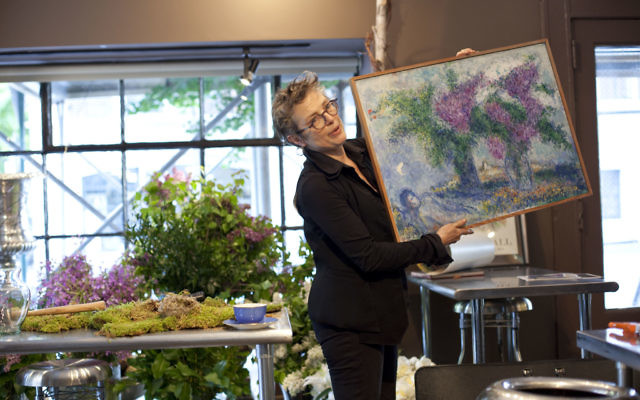Chagall’s granddaughter visiting for Joint
IN 1921, Marc Chagall, born Moishe Segal in Lithuania, lived in poverty near Moscow, amid the chaos of the Bolshevik Revolution. To supplement his income from the modernist paintings he pioneered, the struggling artist taught art at a shelter supported by the Joint Distribution Committee (JDC) for Jewish boys orphaned by Ukrainian pogroms. The art lessons buoyed their threadbare lives.
IN 1921, Marc Chagall, born Moishe Segal in Lithuania, lived in poverty near Moscow, amid the chaos of the Bolshevik Revolution. To supplement his income from the modernist paintings he pioneered, the struggling artist taught art at a shelter supported by the Joint Distribution Committee (JDC) for Jewish boys orphaned by Ukrainian pogroms. The art lessons buoyed their threadbare lives.
Twenty years later, in 1941, when Chagall was living and painting in France, he and his wife Bella found themselves trapped, as German armies advanced across Europe. Due to the efforts of “the Joint”, they were able to flee to America.
The karma of the helper who is later helped was not lost on Bella Meyer, Chagall’s granddaughter, as she spoke to The AJN from her home in New York, ahead of her visit to Australia to give keynote addresses at the Joint Australia’s inaugural gala events in Sydney and Melbourne this week.
“That’s very true, very beautiful,” she reflected. To the orphans, Chagall was a lifesaver. “He changed their moods, he communicated with them through the painting.”
In 1940, Varian Fry, an American editor, journalist and humanitarian, joined other concerned Americans in founding the Emergency Rescue Committee (ERC), a group that feared strong US immigration restrictions in force since 1924 would prevent imperilled artists, especially in occupied France, from ever having their Statue of Liberty moment.
So the ERC created a list of luminaries to be rescued by the US and for 13 months in 1940-41, the organisation, with support from the US consulate in Marseille, hoodwinked the pro-Nazi Vichy regime in France, ferrying over 2000 notables to safety in the US.
Chagall, writer Hannah Arendt, artist Max Ernst, harpsichordist Wanda Landowska and composer Alma Mahler were among those saved. Chagall’s daughter Ida spirited 53 of her father’s artworks out of France.
But the refugee operation was costly, involving ship’s tickets and immigration bonds, and the ERC contacted the Joint, which provided the finances to bring artists across the Atlantic.
“The Joint remained very discreet about their contributions,” said Meyer. “I only learned recently how involved they were with the efforts for the refugees. I always heard about the Emergency Rescue Committee but never really heard about the active part of the Joint.”
Beyond the humanitarian aspect, Chagall’s rescue was a cultural milestone; dubbed the “father of modernism”, his works now adorn landmarks around the planet, and can be found at the Paris Opera, UN headquarters and the Met in New York, and Hadassah Medical Centre in Jerusalem.
Like her celebrated grandfather, Paris-born Meyer had an artistic calling – she runs a well-known floral design business in New York, and creates theatrical costumes and masks. Like her grandfather, she lived in France, initially arriving in the US, as it were, for art’s sake; she was an attache to the French embassy, responsible for visual arts and culture.
She paid tribute to the Joint’s present-day rescue and support services in the former Soviet Union, where her grandfather originated from, and while in Australia wants to share her personal story and raise awareness of the Joint’s initiatives.
Meyer said she and her twin sister Meret owe their very existence to the JDC: “Many of us would not even be here if it was not for the Joint.”
The Joint Australia’s Melbourne gala event will take place at Carousel tomorrow (November 10). The Joint Australia’s Sydney gala event will take place at the Royal Motor Yacht Club on November 12. For more information, contact Caryn Farber: caryn@thejointaustralia.org.
PETER KOHN


comments